Tourists who make their way to Saxony-Anhalt usually visit the Harz Mountains, the cities of Magdeburg and Halle, Naumburg Cathedral or the Bauhaus in Dessau – all of them world famous or even Unesco World heritage. But in addition to these well-known sights, there are also a whole lot of Saxony-Anhalt insider tips. While many other blogs and magazines advertise the regular sights in Saxony-Anhalt as insider tips, we have put together a list of real Saxony-Anhalt insider tips that you won’t find anywhere else.
In this article, we reveal some of Saxony-Anhalt’s best hidden gems – from picturesque small towns to breathtaking natural landscapes and historic sites that will surprise even seasoned Saxony-Anhalt travelers. Immerse yourself in the world of Saxony-Anhalt’s unknown wonders, which are off the beaten track but still on the way. Whether you are a lover of nature, history or art, Saxony-Anhalt offers a variety of experiences. Let’s go!
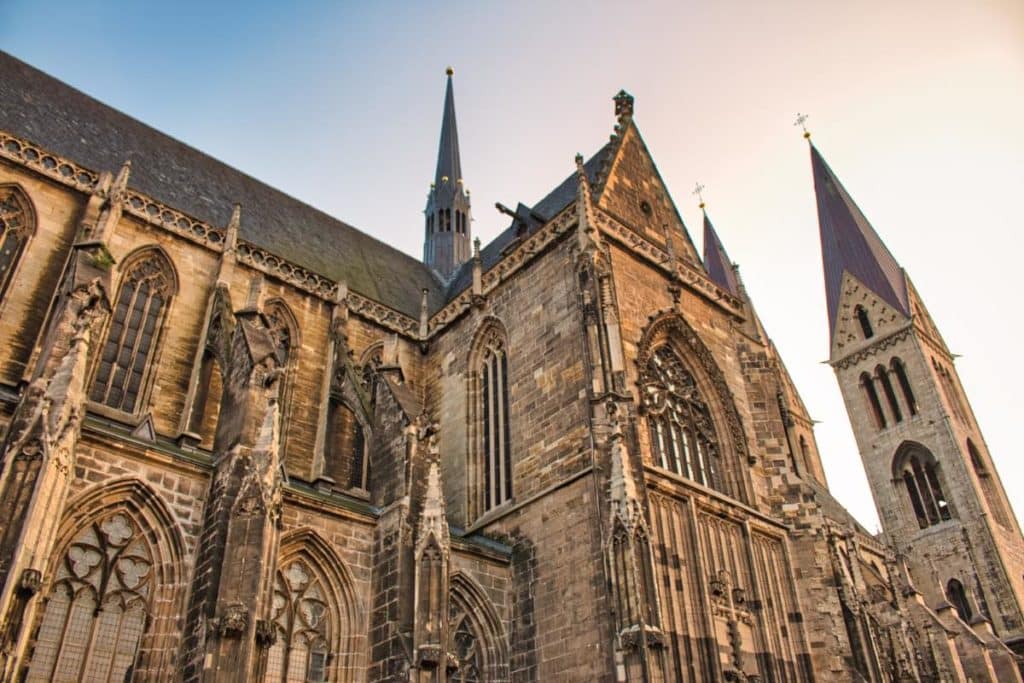
Halberstadt with its cathedral and cathedral treasury – one of the most beautiful churches in the country
One of the most beautiful churches in the region is undoubtedly Halberstadt Cathedral. It looks French, because the master builders probably took the Reims Cathedral in France as a model. With 13 bells of different sizes, the bell ringing is one of the best in Germany and is itself one of Saxony-Anhalt’s underrated sights. And the cathedral treasury (admission 8 euros) is one of the best-preserved treasures and dates back to the Fourth Crusade in the 13th century.
The largest dam in the Harz Mountains is a child of socialism. The GDR built the highest dam in Germany (106 meters) from 1952 to 1959 for the production of drinking water and electricity. The view over the grounds is impressive. However, the newly built Titan RT suspension bridge (6 euros admission) right next to it is even more dizzying.
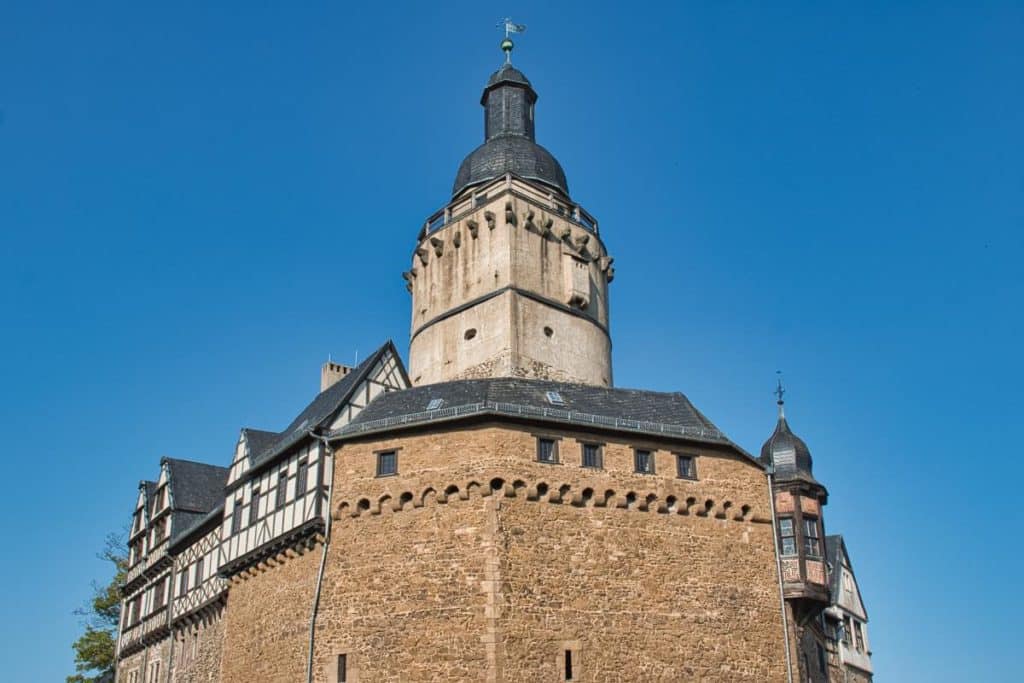
Falkenstein Castle – a castle with a view
Falkenstein Castle is one of the most beautiful castles in eastern Germany. It is located in the middle of the Harz forests. With its thick walls and half-timbered architecture, it looks like a real castle from the Romanesque period. At Falkenburg Castle you can book a meal with medieval performances and there are often medieval markets. However, the most beautiful view of the surrounding Harz foreland is from the tower of Falkenstein Castle.
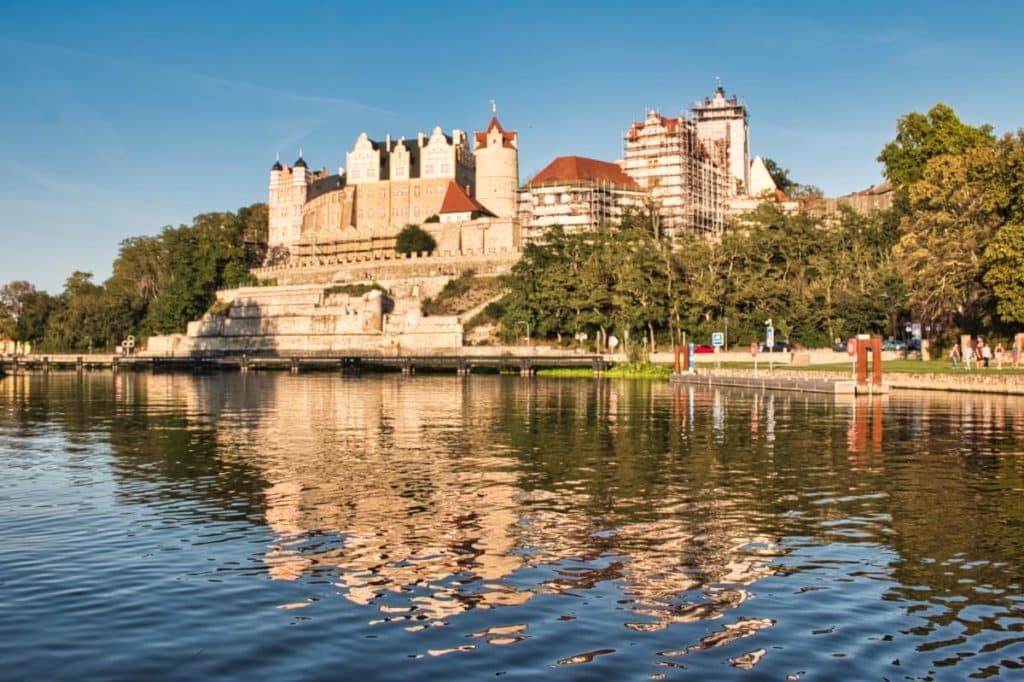
Bernburg – beauty and horror on the Saale
Bernburg is one of the towns in Saxony-Anhalt, and indeed in eastern Germany, that deserves much more attention. In addition to the impressive castle, there is also a beautiful and cozy old town to see. One of the city’s highlights is the Capitol cinema in Bernburg. It is one of the best-preserved Art Deco cinemas in Germany. It is run by a Dutch family themselves.
But Bernburg also has its downsides. While it was considered the epitome of psychiatry in GDR times because of the clinic there, a killing center was located here during the Nazi era. Thousands of disabled people were murdered here as part of Aktion T4, also known as the euthanasia program. Aktion T4 was the dress rehearsal for the Holocaust. You can find out more about this sad chapter in German history at the Bernburg Memorial.
Vockerode power station – forgotten industrial heritage
Vockerode power plant is a former lignite-fired power plant in Saxony-Anhalt. It was built between 1937 and 1940 and played an important role in the region’s energy supply. It was still an important industrial site in GDR times, but was shut down after reunification. The chimneys of the power station later had to give way in spectacular blasting operations. Unfortunately, the building is only very rarely open for a visit, but if you get the chance, you should make the most of it.
I once visited the power station as a teenager at a national exhibition and even then I found the huge halls with the control rooms fascinating. Before the coronavirus pandemic, there were still guided tours. Unfortunately, they are currently paused. However, as this is close to many people’s hearts, this could still change.
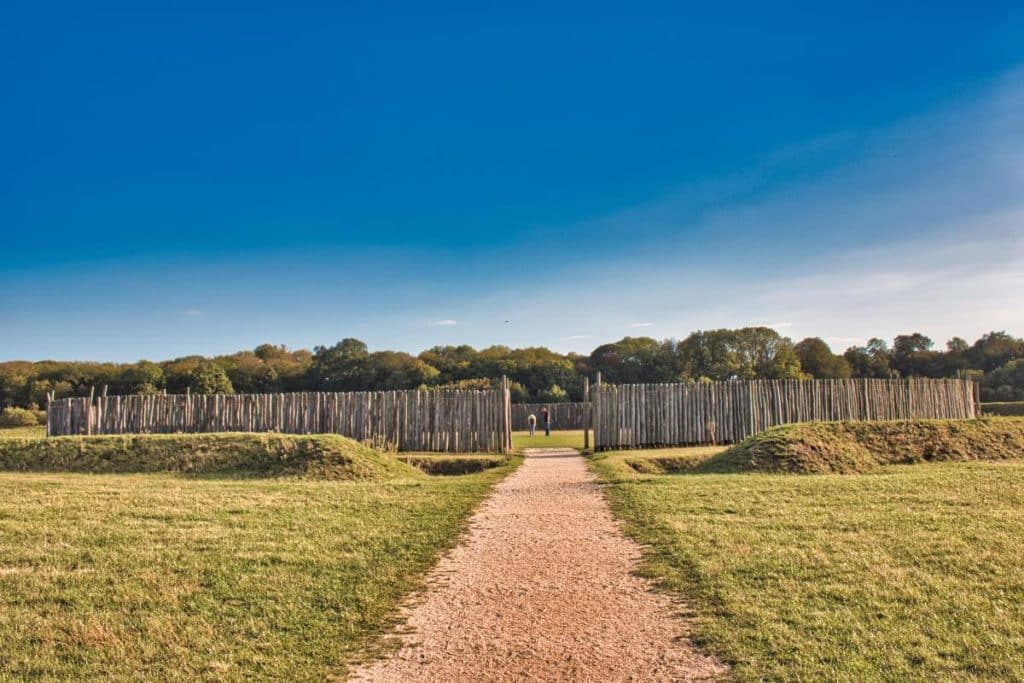
Goseck Solar Observatory – For sun worshippers
In Goseck you can see that some kind of science seems to have played a role even in the Stone Age. Even though archaeologists have found a circular tomb in Goseck, they believe that this is the oldest solar observatory in the world. We think it’s definitely worth a stop and if you compare it with Stonehenge, it’s also a whole lot cheaper (information center 2 euros, observatory even free).
The famous Nebra Sky Disk was discovered in Nebra and is considered one of the most important archaeological finds of the millennium. Even though the disk itself is now on display in Halle, the context of its creation is shown here and numerous myths surrounding the disk are uncovered. Was the sky disk really a star map? Here you will find an answer to this question.
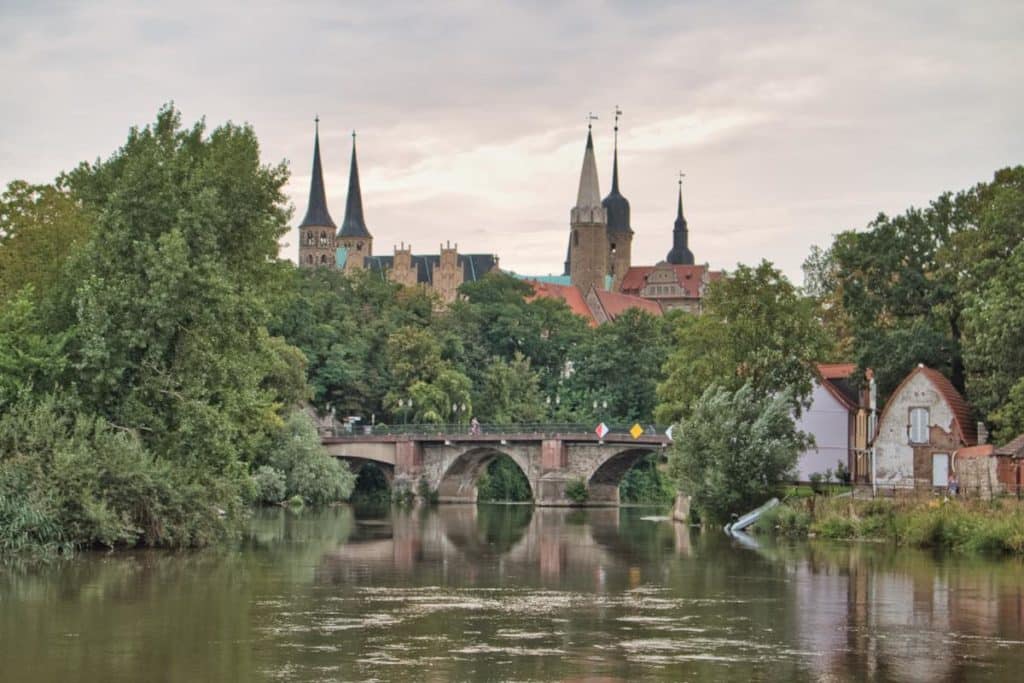
Merseburg – Stop the raven!
Merseburg Castle is shrouded in legend, like so much of Saxony-Anhalt. In the 15th century, Bishop Thilo von Trotha is said to have accused his servant of stealing a ring. The servant was executed. However, the ring was later found in a raven’s nest. Out of remorse, the raven with the ring became the city’s heraldic animal. Ravens still live in Merseburg Castle today. Merseburg Cathedral is another beautiful building on the Romanesque Road that you shouldn’t miss.
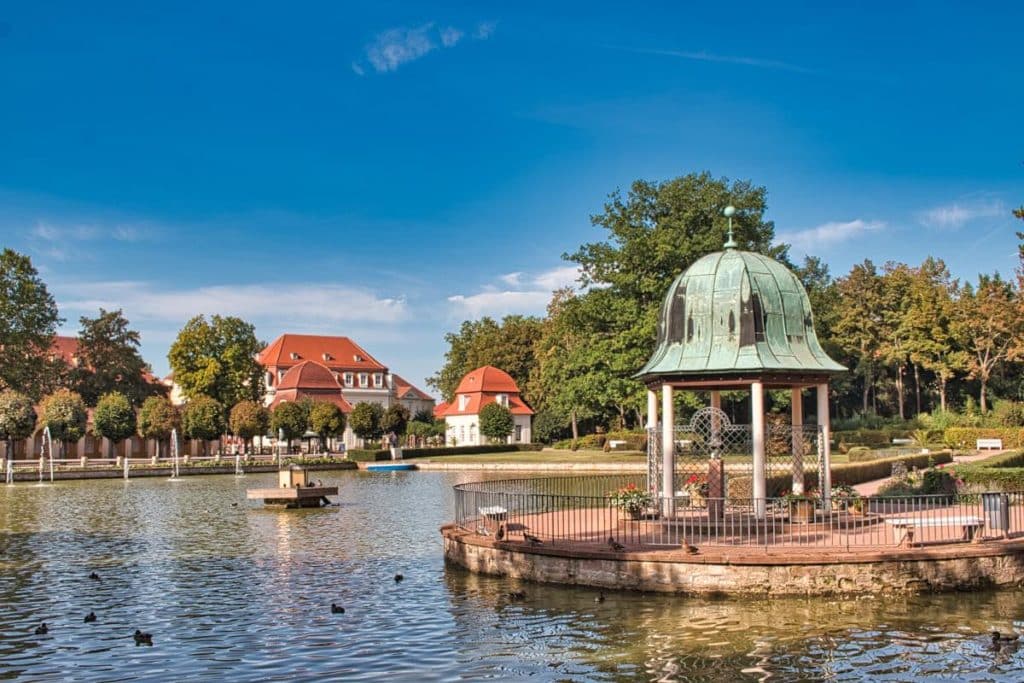
Bad Lauchstädt with Goethe Theater – a gem with health benefits
A healing spring was discovered in Lauchstädt in the 17th century, prompting the Saxon nobility to flock to this far-flung corner of Saxony to be cured. Goethe also stayed here later, who had a theater built here on behalf of the Saxon electors for the high society of the time. It has been preserved to this day and is the only surviving theater from the classical period in Germany. The town itself still exudes the charm it once had when the Electorate of Saxony turned it into a cultural hotspot for a short time.
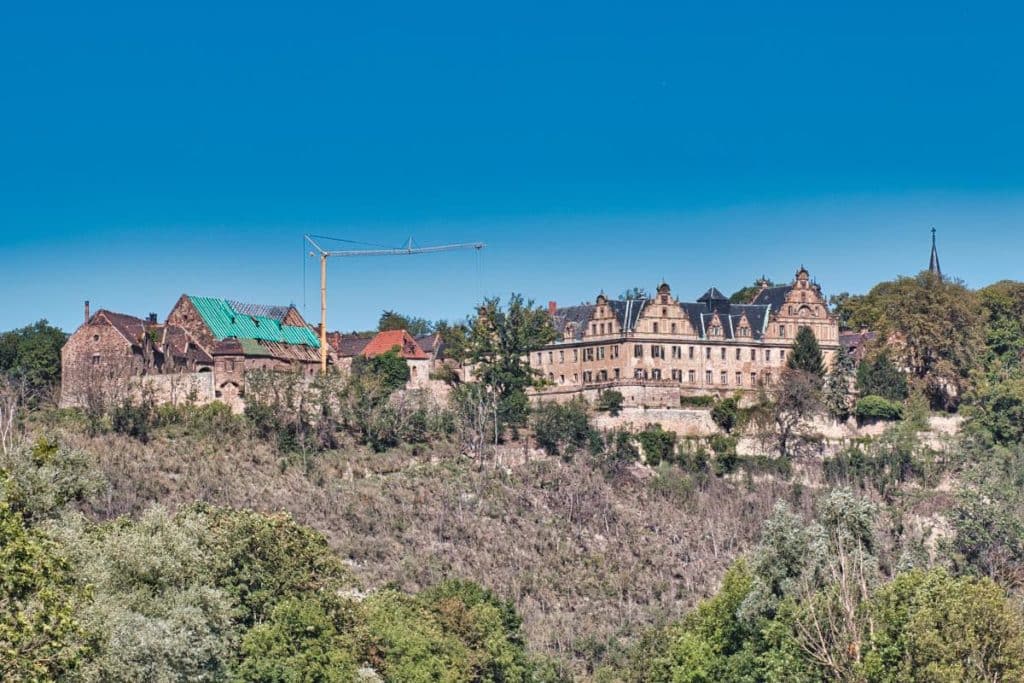
Vitzenburg Castle – Perfect for the sequel to Harry Potter
If you’ve ever wondered what would be the perfect setting for a German version of Harry Potter, here’s a candidate. A Bibi Blocksberg film was shot at Vitzenburg Castle. And you can imagine the necessary creepy factor. Because in GDR times, after German reunification until 1995, this was a mental hospital for children. Unfortunately, the castle is not regularly accessible. However, there are guided tours there on very rare occasions. If you would like to see what the castle looks like from the inside, you can find a picture gallery with pictures from Vitzenburg Castle here.
Seeburg Castle – Picnic with a view of the castle
Seeburg Castle, a hidden gem in the picturesque Mansfeld region, attracts visitors year after year with its impressive architecture and idyllic location on the shores of the Süßen See lake (see photo at the top). As one of the historical landmarks of the region and the former castle of the Counts of Mansfeld, Seeburg Castle offers a breathtaking backdrop for photography enthusiasts and architecture lovers. U
nder the picturesque landscape and the glistening Sweet Lake, Seeburg is a perfect destination for day trips and offers ideal conditions for hiking, a canoe trip on the lake or a relaxed picnic on the shore.
The castle itself is only open for guided tours, which are offered occasionally. Information about this Saxony-Anhalt insider tip is usually only available in the local press. If you are staying in the area, please ask at your accommodation if they have any information.
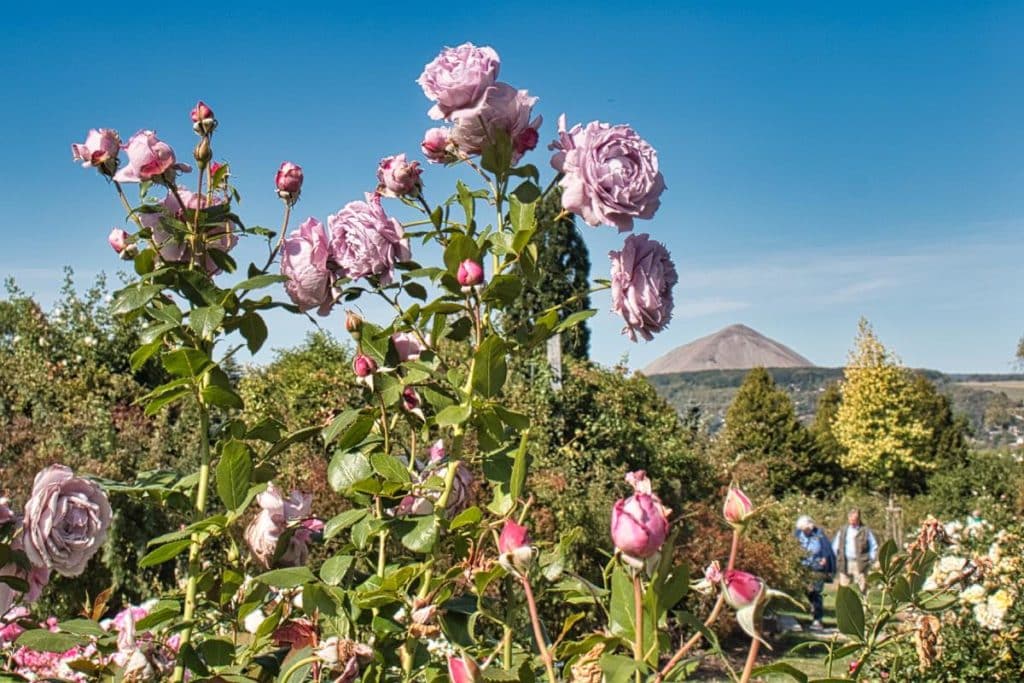
Sangerhausen – Wikipedia of roses
In Sangerhausen there is the Wikipedia of rose cultivation. The Europa-Rosarium is something of an encyclopaedia for old roses. This is because rose varieties from all over the world are grown here. Some of them have become very rare and are threatened with extinction. At least the mammoth in the Spengler Museum no longer has to be afraid of this. After all, the prehistoric creatures have long since disappeared from the face of the earth. However, a mammoth skeleton was found near Sangerhausen in 1931. It is one of the best-preserved skeletons of these giants and is on display in the Spengler Museum.
You should also not forget to visit the Thomas Müntzer mine dump. It can be visited as part of a guided tour. However, this requires a little advance planning, as the tours do not take place very regularly. You can find more information on this in our article on the Mansfeld slag heaps.
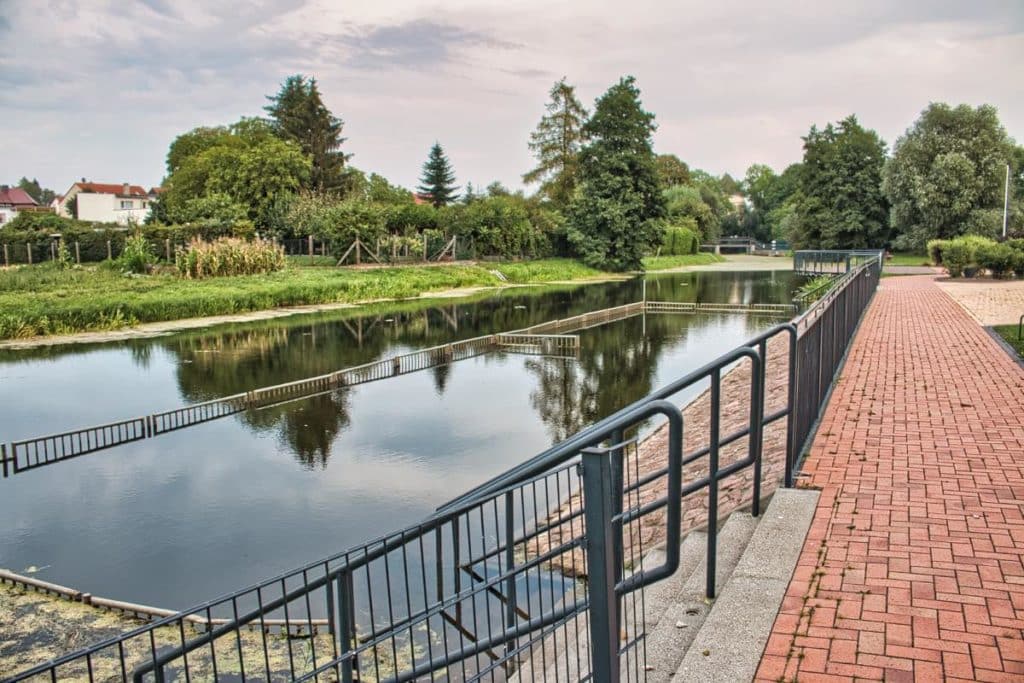
Biesebad in Osterburg – Rare bathing pleasure
River baths are becoming increasingly rare in Germany and Europe. And with the Biesebad, the town of Osterburg in the Altmark has preserved one of these rare baths. The people of Osterburg are also proud of this. And we think that for the entrance fee of 2.50 euros you can contribute to the preservation of this cultural pool. The bathroom is usually quite empty, especially during the week. The water of the Biese is refreshing. If you prefer to stay dry, hire a canoe and paddle down the Biese.
Kalimandscharo – Culture on the spoil tip
The Kalimandscharo is a spoil heap of the potash mine in Zielitz. Cultural events are often held here in summer. There is also art to marvel at. In summer, there is a hike to the slag heap every Saturday. It is possible without advance booking from the beginning of May to the end of September. Find out more on the Kalimanjaro website.
Incidentally, the nearby outdoor pool in Zielitz is the first outdoor pool to open its doors in the state. It is heated to 26 degrees and is therefore already cozy and warm in April.
Tulip field Schwaneberg – Bathing in a sea of flowers
The Schwaneberg tulip field, a breathtaking natural wonder in Saxony-Anhalt, is a true paradise for flower lovers and photographers. Every spring, the field is transformed into a colorful sea of tulips, providing a spectacular backdrop for walks and photo shoots. As one of the rare places in Germany where you can admire such an abundance of tulip species, Schwaneberg attracts numerous visitors every year who want to experience the beauty of this sea of flowers. The tulip field is not only a highlight for garden and nature lovers, but also an ideal excursion destination for families and couples and a real Saxony-Anhalt insider tip.
The best Saxony-Anhalt insider tips
There are still many insider tips to discover in Saxony-Anhalt. From Halberstadt Cathedral to Bernburb and Kalimandscharo, the state offers many attractions so that even experienced Saxony-Anhalt travelers don’t have to get bored here. Many of the regions also offer much more that has not been included here. It is therefore worth taking a look at the articles on the individual regions and looking for other places in the area for a nice day or weekend trip.

